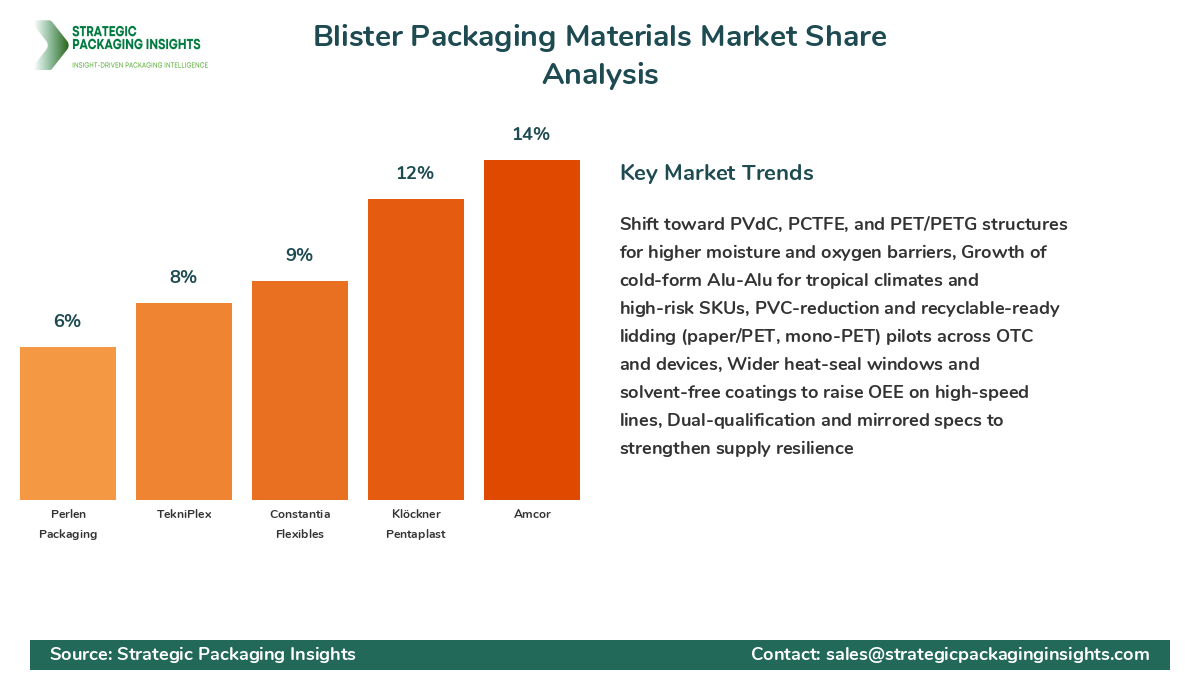- Home
- Packaging Products
- Blister Packaging Materials Market Size, Future Growth and Forecast 2033
Blister Packaging Materials Market Size, Future Growth and Forecast 2033
Blister Packaging Materials Market Segments - by Material Type (PVC, PVdC‑Coated PVC, PET/PETG, Polypropylene, Cold‑Form Aluminum, Aluminum Foil Lidding, PCTFE/COP/COC High‑Barrier Laminates, Paper/PET Lidding), Application (Pharmaceuticals, Nutraceuticals & Supplements, Medical Devices & Diagnostics, Food & Confectionery, Consumer & Industrial Goods), Forming Type (Thermoforming, Cold‑Forming, Trap‑Blister & Blister‑Card, Wallet & Child‑Resistant Formats), Barrier Level (Standard, Medium Barrier, High Barrier, Ultra‑High Barrier) and Region (Asia Pacific, North America, Latin America, Europe, and Middle East & Africa) - Market Dynamics, Growth Opportunities, Strategic Drivers, and PESTLE Outlook (2025–2033)
Blister Packaging Materials Market Outlook
The Blister Packaging Materials market was valued at $21.8 billion in 2024 and is projected to reach $34.6 billion by 2033, growing at a CAGR of 5.3% during the forecast period 2025–2033. Momentum centers on high-Barrier Films and lidding optimized for pharmaceutical solid doses, where dose accuracy, child resistance, and shelf-life extension are paramount. Healthcare expansion, aging populations, and the surge in chronic therapies fuel steady throughput at pharma and CMO lines, while nutraceuticals and OTC categories broaden the addressable base. Material science advances—PVdC upgrades, PCTFE laminates, COP/COC co-extrusions, and recyclable paper/PET or mono-PET lidding—lift performance while addressing regulatory and sustainability expectations. Thermoformed blisters dominate on cost and speed, with cold-form aluminum (Alu‑Alu) gaining where moisture and oxygen barriers must approach near-impermeability. Beyond pharma, diagnostic test kits, small-format medical devices, confectionery portion packs, and consumer electronics accessories add diversified demand, particularly in Asia Pacific where retail and healthcare infrastructures are scaling fast.
Report Scope
| Attributes | Details |
| Report Title | Blister Packaging Materials Market Size, Future Growth and Forecast 2033 |
| Base Year | 2024 |
| Historic Data | 2017-2023 |
| Forecast Period | 2025-2033 |
| Number of Pages | 112 |
| Material Type | PVC, PVdC-Coated PVC, PET/PETG, Polypropylene (PP), Cold-Form Aluminum, Aluminum Foil Lidding, PCTFE/COP/COC High-Barrier Laminates, Paper/PET Lidding |
| Application | Pharmaceuticals, Nutraceuticals & Supplements, Medical Devices & Diagnostics, Food & Confectionery, Consumer & Industrial Goods |
| Forming Type | Thermoforming, Cold-Forming, Trap-Blister & Blister-Card, Wallet & Child-Resistant Formats |
| Barrier Level | Standard, Medium Barrier, High Barrier, Ultra-High Barrier |
| Customization Available | Yes* |
Key Highlights Blister Packaging Materials Market
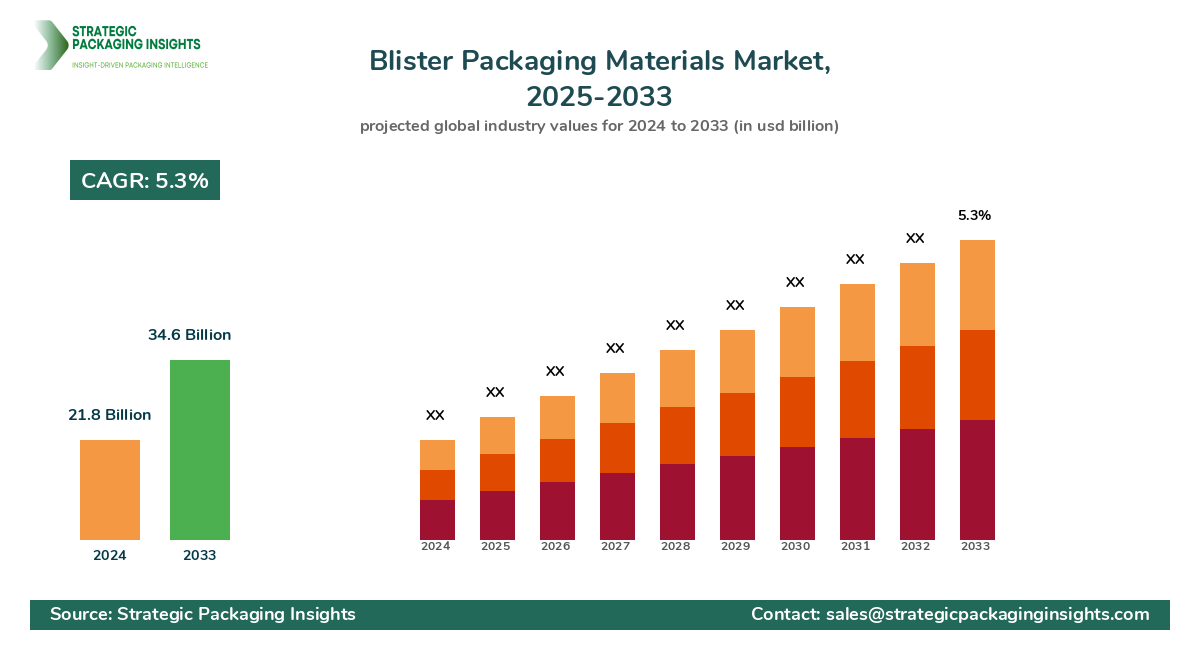
- Barrier upgrade cycle: brand owners shift from standard PVC to PVdC‑coated PVC, PET/PETG, and PCTFE/COP/COC structures to meet stricter moisture and oxygen ingress limits for sensitive APIs.
- Cold-form aluminum momentum: Alu‑Alu formats expand in high-humidity geographies and for hygroscopic products, driving foil and laminate consumption despite higher cost per cavity.
- Regulatory pressure: global pharmacopoeial standards and GMP audits push validated materials, tighter extractables/leachables profiles, and change-control discipline across suppliers.
- Sustainability lens: PVC-reduction initiatives and recyclable lidding (paper/PET, mono-PET) gain traction; producers publish LCA data and shift to solvent-free heat-seal coatings.
- Digital SKU proliferation: more SKUs and shorter runs elevate demand for films with stable thermoforming windows and consistent emboss depth to reduce line rework.
- Supply resilience: dual-qualification of films and lidding becomes a procurement norm; vendors with global footprint and mirrored specs across plants win long contracts.
- CRSF growth: child-resistant senior-friendly wallet formats and push-through foils expand in OTC and specialty pharma, favoring robust heat-seal and puncture-resistant foils.
- Diagnostics tailwind: point-of-care test kits and device disposables require sterile, puncture-resistant, and low-particulate materials, widening the non-pharma base.
- Asia Pacific scale: the region leads consumption through generics, self-medication, and retail formalization, with rapid tech transfer into barrier-enhanced structures.
- Coating innovation: primerless, low-temperature seal chemistries improve line speed and seal integrity, enabling higher OEE on high-cavitation tooling.
Competitive Intelligence
Competition coalesces around integrated film, foil, and laminate specialists with validated healthcare portfolios. Amcor anchors the market with breadth in lidding and barrier films, backed by pharma-grade change control and global tech support. Klöckner Pentaplast (kp) leads rigid blister films with PVC, PVdC‑coated, and PET/PETG lines, emphasizing precise gauge control and deep-draw performance. Constantia Flexibles and TekniPlex excel in healthcare lidding and high-barrier laminates with strong records in peelable and push-through seals. Perlen Packaging and ACG focus on PVdC and high-barrier film systems serving regulated pharma; Honeywell’s Aclar (PCTFE) sets the benchmark for ultra-barrier while advancing thinner gauges. PAXXUS, Winpak, and UFlex round out leadership with specialty lidding, CRSF solutions, and responsive service models. Share gains favor suppliers offering mirrored specifications across continents, robust documentation (DMFs, CoAs, E&L data), and application engineering that boosts OEE and reduces scrap.
Strategically, leaders prioritize barrier innovation, PVC-lite pathways, and recyclable-ready designs without compromising machinability. Differentiation comes from resin selection, surface energy control for reliable printing and sealing, and heat-seal coatings tuned to wide process windows. Vendors losing ground often lack validated change control, show variability across batches, or lag on sustainability disclosures. Client retention correlates with tech service embedded at line trials, rapid root-cause analysis for seal anomalies, and predictable lead times during demand spikes. Geographic reach matters: players with film extrusion, coating, and lamination hubs in North America, Europe, and Asia ensure continuity, while agile regional specialists capture fast-turn projects with competitive cost-to-quality ratios. Partnerships with CMOs/CPOs and tooling firms (for cavity design and forming) deepen stickiness and shape multi-year agreements.
Regional Market Intelligence of Blister Packaging Materials
Global 2024 market distribution: Asia Pacific at $8.8 billion, Europe at $5.5 billion, North America at $4.8 billion, Latin America at $1.3 billion, and Middle East & Africa at $1.4 billion. By 2033, Asia Pacific is projected at $15.0 billion, Europe at $8.0 billion, North America at $7.3 billion, Latin America at $2.3 billion, and Middle East & Africa at $2.0 billion (all in USD Billion). Regional variation reflects pharma mix, humidity profiles, and regulatory rigor: APAC gains on generics, diagnostics, and retail channels; Europe balances specialty Rx with mature OTC; North America stabilizes on high-value therapies and CRSF packaging; Latin America and MEA scale from a smaller base led by policy-driven healthcare access and local manufacturing expansion.
North America: Demand centers on prescription and specialty OTC, with wallet and CRSF formats expanding. Materials must pair strong barriers with line-ready seal coatings to push OEE on high-speed thermoformers. Recyclability pilots—mono-PET cards and paper/PET lidding—advance with retailer commitments, while PVC remains entrenched for cost and formability. FDA oversight and serialization needs intensify documentation requirements, favoring suppliers with robust change management and mirrored specifications across plants. Contract packagers rely on dual-sourced films to mitigate risk, reinforcing preference for suppliers with North American stock points and rapid tech support.
Europe: Strong GMP culture and sustainability policies support PVdC optimization, PCTFE down-gauging, and PVC-reduction initiatives. Brand owners trial recyclable lidding and solvent-free coatings, with EPR frameworks nudging material choices. Cold-form aluminum remains standard for ultra-sensitive products, while PET/PETG grows in markets prioritizing recyclability. Distributors play a pivotal role in multi-country supply assurance; suppliers that maintain consistent emboss depth, haze, and seal performance across batches secure repeat wins with top CMOs.
Asia Pacific: APAC leads volume through generics, self-medication, and diagnostics. High humidity in South and Southeast Asia boosts PVdC and PCTFE usage, while China and India scale both thermoforming and Alu‑Alu lines. Local players compete on cost, but multinational brands retain share for complex barrier stacks and validated change control. Government incentives for domestic pharma manufacturing accelerate line installations, creating pull for gauge-stable films and low-temperature seal lidding that lifts throughput.
Latin America: Market growth follows formulary expansion and local fill-finish capacity. Buyers gravitate to PVdC‑coated PVC and aluminum lidding for tablets and capsules, with cold-form used for specific high-sensitivity SKUs. Currency volatility and freight costs favor regional inventories and flexible MOQs from distributors. Compliance upgrades drive documentation and DMF-backed materials, while public tenders increasingly cite CRSF and traceability features.
Middle East & Africa: Healthcare buildout and hot, humid climates support barrier-heavy structures, especially for essential medicines. Import-dependent supply chains value guaranteed lead times and validated alternates. Gulf markets see faster adoption of premium formats and wallet packs, whereas many African markets prioritize rugged, cost-optimized blisters with reliable push-through performance. Distributors with technical service capabilities and climate-controlled storage win multi-year supply agreements.
Top Countries Insights in Blister Packaging Materials
China (Market: $4.9 Billion, CAGR: 7%): Scale in generics, diagnostics, and OTC underpins robust demand for PVdC films, PET/PETG, and foil lidding. Policy support for domestic pharma and device manufacturing drives new blister lines, while export-facing firms adopt PCTFE laminates and rigorous change-control. Challenges include balancing sustainability targets with the entrenched PVC base and ensuring consistent quality across a wide supplier pool.
United States (Market: $4.0 Billion, CAGR: 4%): High-value therapies and OTC categories sustain lidding and film demand, with rapid trials of recyclable paper/PET and mono-PET solutions. Strict FDA expectations elevate the importance of E&L data, DMFs, and sealed-package integrity testing. Contract packagers drive multi-source strategies, and CRSF wallet formats lift peelable and puncture-resistant lidding consumption. Inflationary input costs push down-gauging and OEE improvements on legacy equipment.
India (Market: $1.7 Billion, CAGR: 9%): Explosive growth in generics and exports intensifies adoption of PVdC and Alu‑Alu. Manufacturers seek consistent thermoforming windows, deep-draw capability, and reliable seal at lower temperatures to accelerate cycles. Government production-linked incentives and plant expansions widen the materials funnel, while sustainability goals start to influence PVC substitution and paper/PET lidding trials.
Germany (Market: $1.5 Billion, CAGR: 3%): Strong Rx, CDMO presence, and engineering excellence define demand for precise gauge, low-haze films, and high-integrity lidding. EU sustainability frameworks and customer EPR targets encourage PVC reduction and recyclable-ready designs. Wallet and CRSF formats see steady use in OTC and specialty care, though cost discipline favors incremental barrier upgrades over wholesale material shifts.
Japan (Market: $1.2 Billion, CAGR: 2%): Mature demand focuses on ultra-consistent films with tight tolerances, low particulates, and proven seal chemistries. Quality expectations support PCTFE for moisture-sensitive SKUs and PET/PETG where clarity and stiffness matter. Demographic trends keep OTC volumes resilient, while stable regulatory oversight emphasizes validated suppliers and meticulous change management.
Blister Packaging Materials Market Segments Insights
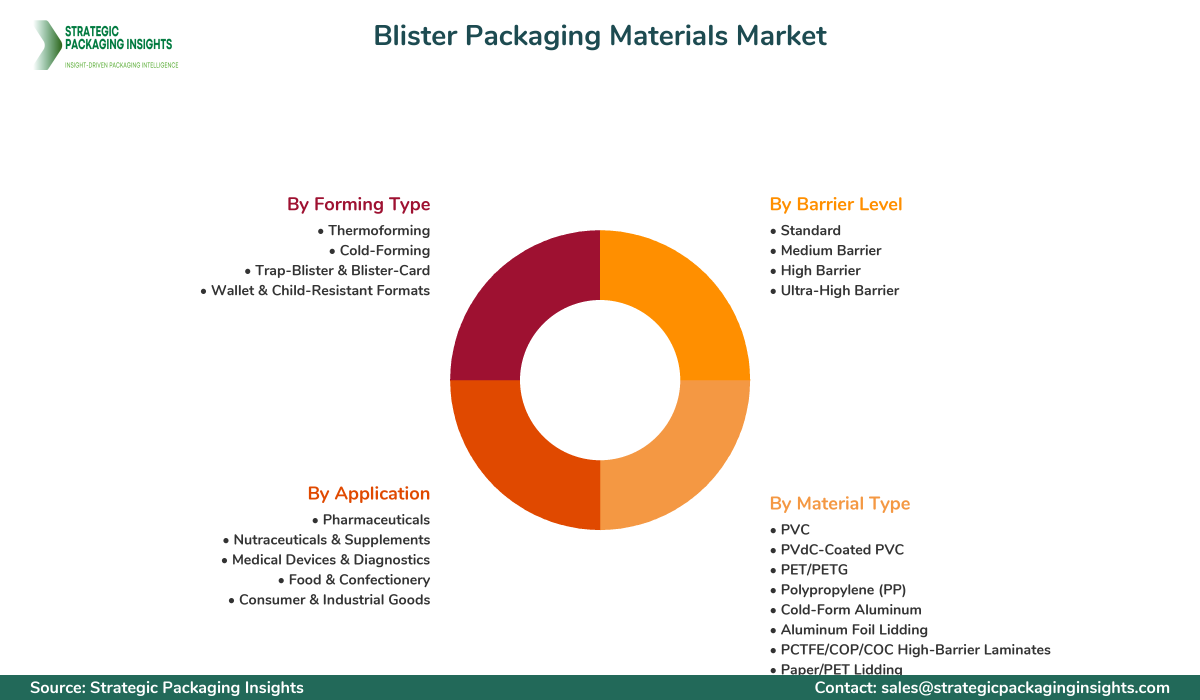
Material Type Analysis
Material selection starts with the application’s moisture and oxygen sensitivity, desired shelf life, and processing window. PVC maintains a large installed base due to cost and excellent formability, but many programs upgrade to PVdC‑coated PVC for better moisture barrier in humid climates and for hygroscopic APIs. PET/PETG gains share where clarity and recyclability initiatives are in focus, with improved draw ratios and thermoforming windows narrowing historical gaps versus PVC. Polypropylene fits when higher heat resistance is needed, though it demands tighter process control to avoid warpage. For ultra-barrier needs, cold-form aluminum (Alu‑Alu) removes light and vapor ingress entirely at the cavity, while aluminum foil lidding remains the default for push-through integrity across Rx and OTC. PCTFE-based laminates (e.g., Aclar) and advanced COP/COC co-extrusions deliver top-tier moisture protection with reduced thickness and improved transparency, enabling pack size reduction without compromising product stability.
Procurement teams emphasize validated change control, DMF-backed materials, and robust E&L data, narrowing the supplier roster to proven players. Down-gauging is common across films and foils, but only when stiffness and puncture resistance remain within spec to preserve child resistance and senior usability. Heat-seal coating chemistry is a strategic differentiator: solvent-free, primerless systems broaden sealing windows, cut carbon, and support faster cycles. Sustainability postures increasingly influence choices—PVC-lite or PVC-free paths, recyclable paper/PET lidding, and mono-material structures for select OTC and non-sterile medical products. Suppliers that publish LCA and EPR-ready documentation, while offering mirrored specs across continents, secure multi-year agreements with CMOs and big pharma.
Application Analysis
Pharmaceuticals dominate volume, especially for tablets and capsules where blister packs ensure unit-dose accuracy and tamper evidence. Rx and OTC stakeholders prioritize barrier durability, print fidelity for serialization/UDI elements, and CRSF performance in family environments. Nutraceuticals and supplements—often moisture-sensitive—adopt PVdC and PET/PETG with foil lidding, focusing on clarity and premium graphics to differentiate on shelf. Medical devices and diagnostics rely on puncture-resistant lidding, low-particulate films, and validated seals for sterile barriers in certain device classes, with trap-blisters supporting clean presentation and instruction visibility. Food and confectionery leverage clear PET and PP for portion control, freshness, and merchandising impact, balancing barrier with rapid line speeds and regulatory compliance for food contact. Consumer and industrial goods—batteries, tools, accessories—value theft deterrence, hang-display durability, and compatibility with automated forming and sealing.
Across applications, SKU proliferation and shorter runs push materials that hold color and seal quality through frequent changeovers. Printers and converters require topcoat systems that deliver crisp codes, high-contrast artwork, and abrasion resistance during distribution. Healthcare audits intensify demands for comprehensive documentation, including CoAs, CoCs, and migration data. The push for sustainability triggers pilots in mono-PET blister cards and recyclable lidding for OTC and devices, while high-risk Rx products continue to rely on PVdC, PCTFE, or Alu‑Alu. Application engineering—cavity design, web handling, preheat profiles—remains critical to extract material performance, minimizing delamination, blister card curl, and pinholes that otherwise drive costly rework.
Forming Type Analysis
Thermoforming remains the workhorse thanks to speed, cost efficiency, and strong aesthetics, especially with PVC and PET/PETG. Stable thermoforming windows—defined by preheat profiles, draw ratios, and plug-assist design—reduce thinning at corners and maintain cavity geometry, improving push-through behavior and CRSF consistency. Cold-forming (Alu‑Alu) delivers unmatched barrier by shaping multilayer aluminum laminates without heat, ideal for moisture- and light-sensitive products. While cycle times are lower and material cost higher, the tradeoff is justified in tropical climates, long supply chains, and biotech molecules with tight stability budgets. Trap‑blister and blister‑card formats blend a formed cavity with paperboard, allowing large printable areas for brand and instructions, seen in devices, diagnostics, and retail goods. Wallet and CRSF formats integrate leaflets and reclosable features, raising lidding demands for peel strength control and puncture resistance.
As lines evolve, converters seek materials that support faster index rates, wider seal windows, and consistent deep draws. Heat-seal coatings engineered for low-temperature activation expand throughput and reduce thermal stress on cards, shrinking delamination risk. With serialization and tamper-evidence, printers demand lidding surfaces that accept variable data with high contrast and smudge resistance. Tooling partners collaborate with material suppliers to align cavity radii and emboss patterns to film behavior, curbing corner whitening and micro-cracking. Cold-forming continues to gain where risk mitigation rules, while hybrid strategies—thermoformed base with high-barrier lidding—serve mid-barrier SKUs to manage cost and sustainability targets.
Barrier Level Analysis
Standard barrier solutions—uncoated PVC with foil lidding—fit less sensitive OTC and short-shelf-life goods, trading cost efficiency for acceptable moisture ingress. Medium barrier, typically PVdC‑coated PVC or PET/PETG with enhanced lidding, suits many generics and nutraceuticals, balancing performance and economics in temperate climates. High barrier solutions introduce PCTFE laminates, thicker PVdC coats, or multi-layer structures to meet stringent MVTR and OTR specs, enabling shelf life extension in humid regions. Ultra-high barrier, via cold-form aluminum or optimized PCTFE stacks, protects the most sensitive molecules, high-value SKUs, and export programs traversing long, hot supply chains. Selection depends on API hygroscopicity, desiccant strategies, distribution risk, and target shelf-life curves validated through ICH stability zones.
Procurement increasingly applies total cost of ownership logic: savings from reduced complaints, fewer stability failures, and higher line OEE can offset material premiums. Barrier right-sizing avoids overengineering while meeting risk thresholds, with LCA and EPR considerations guiding PVC-reduction and recyclable-ready choices where feasible. Suppliers publish barrier curves, seal strength ranges, and deep-draw data to support rapid qualification. As climate variability intensifies logistics risk, many brands shift SKUs upward one barrier tier for tropical markets. Ultra-barrier remains essential for biologically active or hygroscopic compounds, while mid-barrier solutions expand with improved PVdC chemistries and thinner yet tougher high-clarity films.
Market share concentrates among global leaders with validated healthcare portfolios: Amcor commands a leading position through its breadth in lidding and barrier films, extensive regulatory documentation, and synchronized specs across plants. Klöckner Pentaplast leads rigid films with deep PVdC expertise and strong relationships with top CMOs. Constantia Flexibles and TekniPlex hold significant shares in pharma lidding and high-barrier laminates, prized for stable seal performance and print receptivity. Perlen Packaging and ACG excel in PVdC and high-barrier stacks for generics-heavy markets, while Honeywell dominates ultra-barrier PCTFE supply. PAXXUS, Winpak, and UFlex grow via agility, CRSF solutions, and competitive lead times. Share shifts track with suppliers’ ability to guarantee continuity under volatility, deliver PVC-lite options without line penalties, and publish comprehensive E&L and carbon data. Concentration supports disciplined pricing and targeted program discounts, while intensifying R&D races in seal chemistry, down-gauged ultra-barrier, and recyclable-ready designs. Strategic partnerships with CMOs and tooling firms increasingly shape specifications and lock in multi-year volumes.
Blister Packaging Materials Market Segments
The Blister Packaging Materials market has been segmented on the basis of
Material Type
- PVC
- PVdC-Coated PVC
- PET/PETG
- Polypropylene (PP)
- Cold-Form Aluminum
- Aluminum Foil Lidding
- PCTFE/COP/COC High-Barrier Laminates
- Paper/PET Lidding
Application
- Pharmaceuticals
- Nutraceuticals & Supplements
- Medical Devices & Diagnostics
- Food & Confectionery
- Consumer & Industrial Goods
Forming Type
- Thermoforming
- Cold-Forming
- Trap-Blister & Blister-Card
- Wallet & Child-Resistant Formats
Barrier Level
- Standard
- Medium Barrier
- High Barrier
- Ultra-High Barrier
Primary Interview Insights
What is driving material upgrades in blister applications?
How are packers tackling shorter runs and more SKUs?
Where do sustainability efforts show quickest traction?
What differentiates preferred suppliers?
Which regions are outgrowing the global average?
Latest Reports

The corrugated board packaging market was valued at $250 billion in 2024 and is projected to reach $380 billion by 2033, growing at a CAGR of 4.5% during the forecast period 2025–2033.
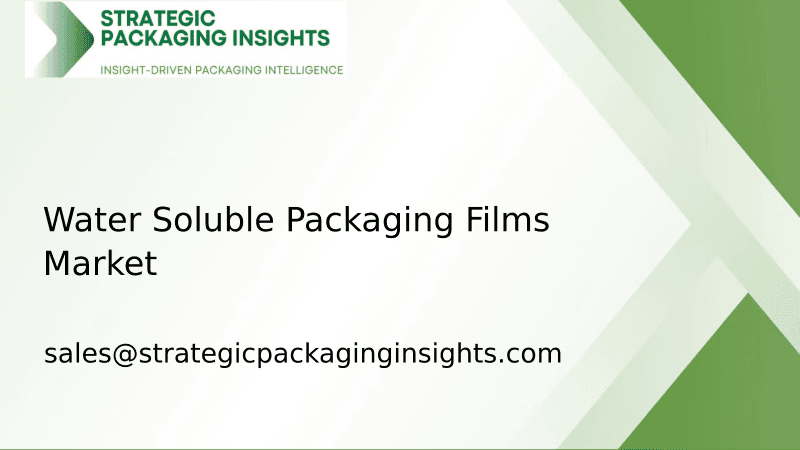
The Water Soluble Packaging Films market was valued at $2.8 billion in 2024 and is projected to reach $5.6 billion by 2033, growing at a CAGR of 8.1% during the forecast period 2025–2033.

The Aluminium Foil Packaging market was valued at $25 billion in 2024 and is projected to reach $40 billion by 2033, growing at a CAGR of 5.5% during the forecast period 2025–2033.

The self-heating food packaging market was valued at $4.5 billion in 2024 and is projected to reach $7.8 billion by 2033, growing at a CAGR of 6.2% during the forecast period 2025–2033.

The Smart Container market was valued at $2.5 billion in 2024 and is projected to reach $8.7 billion by 2033, growing at a CAGR of 14.5% during the forecast period 2025–2033.

The Automatic Labeling Machine market was valued at $2.5 billion in 2024 and is projected to reach $4.8 billion by 2033, growing at a CAGR of 7.2% during the forecast period 2025–2033.

The Hot Melt Glue Labeler market was valued at $1.2 billion in 2024 and is projected to reach $2.3 billion by 2033, growing at a CAGR of 6.5% during the forecast period 2025–2033.

The Ethical Label market was valued at $1.5 billion in 2024 and is projected to reach $3.2 billion by 2033, growing at a CAGR of 8.5% during the forecast period 2025–2033.

The Packaging Tensioner market was valued at $1.2 billion in 2024 and is projected to reach $2.3 billion by 2033, growing at a CAGR of 6.5% during the forecast period 2025–2033.
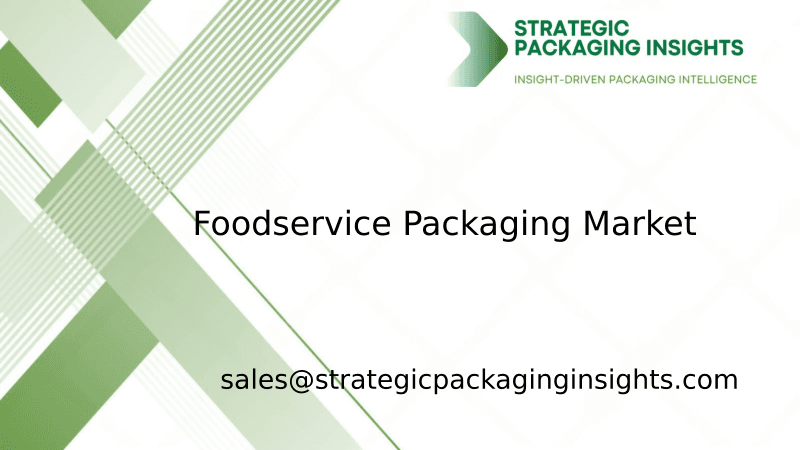
The foodservice packaging market was valued at $120 billion in 2024 and is projected to reach $180 billion by 2033, growing at a CAGR of 4.5% during the forecast period 2025–2033.

The nano-enabled packaging market was valued at $15.2 billion in 2024 and is projected to reach $35.6 billion by 2033, growing at a CAGR of 9.5% during the forecast period 2025–2033.
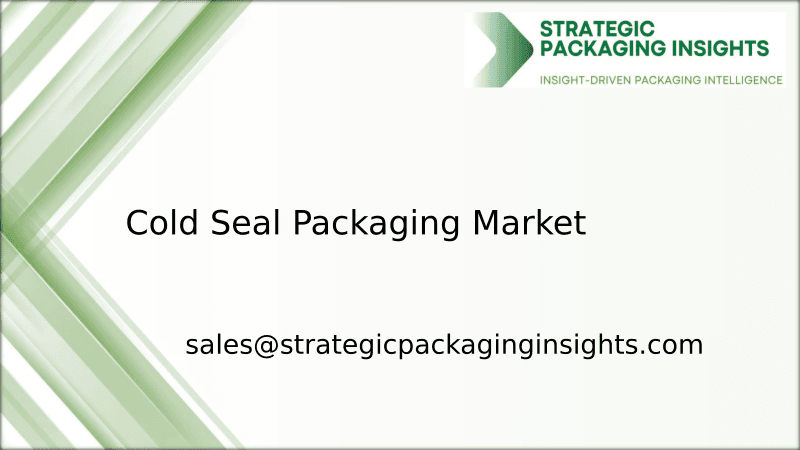
The Cold Seal Packaging market was valued at $1.5 billion in 2024 and is projected to reach $2.3 billion by 2033, growing at a CAGR of 4.8% during the forecast period 2025–2033.

The Transparent Barrier Packaging Films market was valued at $12.5 billion in 2024 and is projected to reach $20.3 billion by 2033, growing at a CAGR of 5.8% during the forecast period 2025–2033.

The Flatback Tape market was valued at $2.5 billion in 2024 and is projected to reach $4.1 billion by 2033, growing at a CAGR of 5.8% during the forecast period 2025–2033.

The packer bottle market was valued at $3.5 billion in 2024 and is projected to reach $5.8 billion by 2033, growing at a CAGR of 5.2% during the forecast period 2025–2033.
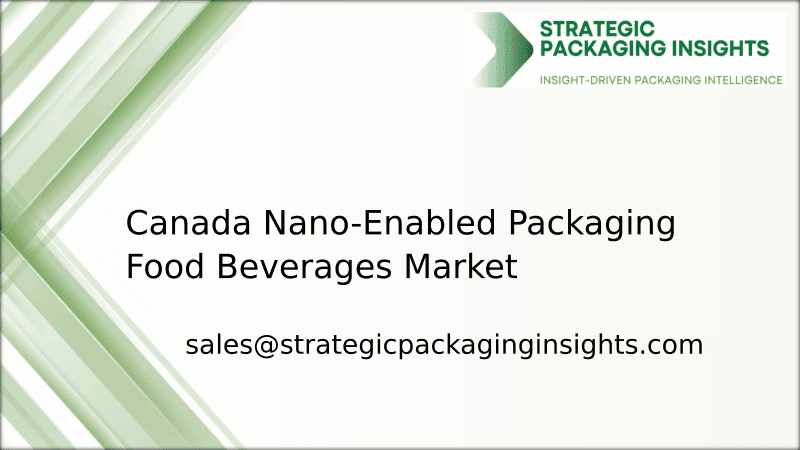
The Canada Nano-Enabled Packaging Food Beverages market was valued at $1.2 billion in 2024 and is projected to reach $3.5 billion by 2033, growing at a CAGR of 12.5% during the forecast period 2025–2033.
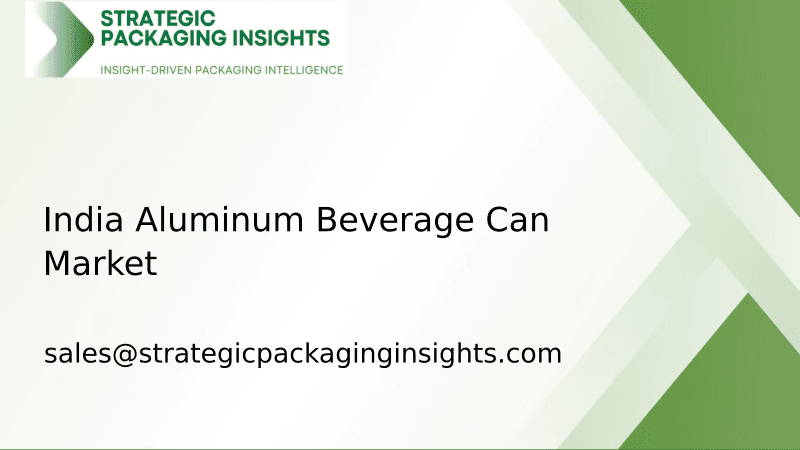
The India Aluminum Beverage Can market was valued at $1.2 billion in 2024 and is projected to reach $2.5 billion by 2033, growing at a CAGR of 8.5% during the forecast period 2025–2033.
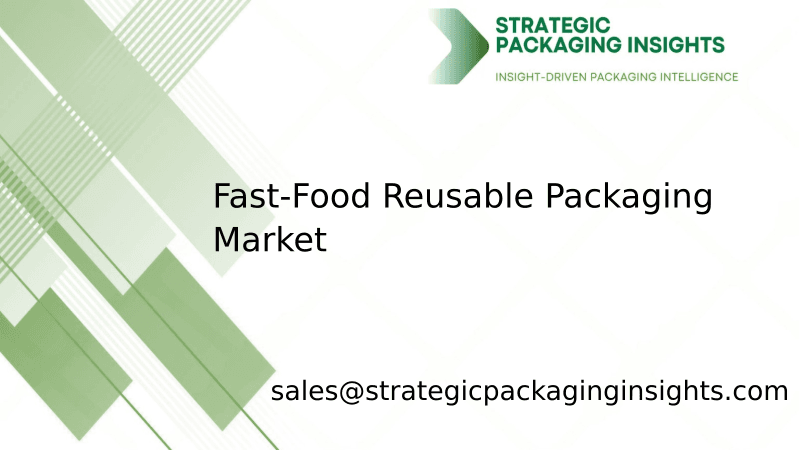
The fast-food reusable packaging market was valued at $1.2 billion in 2024 and is projected to reach $3.5 billion by 2033, growing at a CAGR of 12.5% during the forecast period 2025–2033.
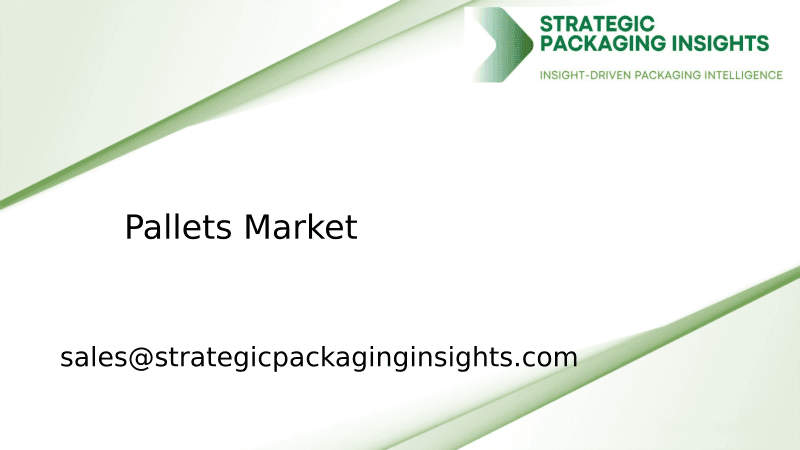
The pallets market was valued at $59.91 billion in 2024 and is projected to reach $88.69 billion by 2033, growing at a CAGR of 4.5% during the forecast period 2025–2033.

The lamination adhesives market was valued at $2.5 billion in 2024 and is projected to reach $4.1 billion by 2033, growing at a CAGR of 5.8% during the forecast period 2025–2033.

The garment packing machine market was valued at $1.2 billion in 2024 and is projected to reach $2.5 billion by 2033, growing at a CAGR of 8.5% during the forecast period 2025–2033.

The shrink bags market was valued at $3.5 billion in 2024 and is projected to reach $5.8 billion by 2033, growing at a CAGR of 5.2% during the forecast period 2025–2033.

The beverage packaging market was valued at $128 billion in 2024 and is projected to reach $186 billion by 2033, growing at a CAGR of 4.2% during the forecast period 2025–2033.

The North America Freight and Logistics market was valued at $1,200 billion in 2024 and is projected to reach $1,800 billion by 2033, growing at a CAGR of 4.5% during the forecast period 2025–2033.
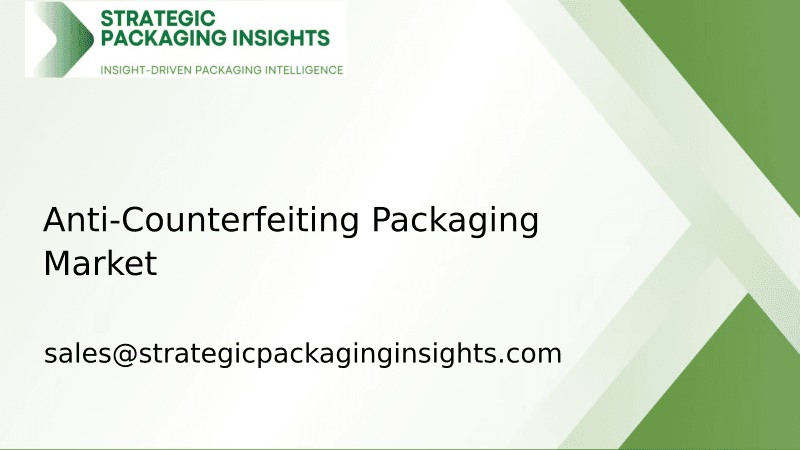
The Anti-Counterfeiting Packaging market was valued at $105 billion in 2024 and is projected to reach $182 billion by 2033, growing at a CAGR of 6.5% during the forecast period 2025–2033.

The corrugated board packaging market was valued at $250 billion in 2024 and is projected to reach $380 billion by 2033, growing at a CAGR of 4.5% during the forecast period 2025–2033.

The Water Soluble Packaging Films market was valued at $2.8 billion in 2024 and is projected to reach $5.6 billion by 2033, growing at a CAGR of 8.1% during the forecast period 2025–2033.

The Aluminium Foil Packaging market was valued at $25 billion in 2024 and is projected to reach $40 billion by 2033, growing at a CAGR of 5.5% during the forecast period 2025–2033.

The self-heating food packaging market was valued at $4.5 billion in 2024 and is projected to reach $7.8 billion by 2033, growing at a CAGR of 6.2% during the forecast period 2025–2033.

The Smart Container market was valued at $2.5 billion in 2024 and is projected to reach $8.7 billion by 2033, growing at a CAGR of 14.5% during the forecast period 2025–2033.

The Automatic Labeling Machine market was valued at $2.5 billion in 2024 and is projected to reach $4.8 billion by 2033, growing at a CAGR of 7.2% during the forecast period 2025–2033.

The Hot Melt Glue Labeler market was valued at $1.2 billion in 2024 and is projected to reach $2.3 billion by 2033, growing at a CAGR of 6.5% during the forecast period 2025–2033.

The Ethical Label market was valued at $1.5 billion in 2024 and is projected to reach $3.2 billion by 2033, growing at a CAGR of 8.5% during the forecast period 2025–2033.

The Packaging Tensioner market was valued at $1.2 billion in 2024 and is projected to reach $2.3 billion by 2033, growing at a CAGR of 6.5% during the forecast period 2025–2033.

The foodservice packaging market was valued at $120 billion in 2024 and is projected to reach $180 billion by 2033, growing at a CAGR of 4.5% during the forecast period 2025–2033.

The nano-enabled packaging market was valued at $15.2 billion in 2024 and is projected to reach $35.6 billion by 2033, growing at a CAGR of 9.5% during the forecast period 2025–2033.

The Cold Seal Packaging market was valued at $1.5 billion in 2024 and is projected to reach $2.3 billion by 2033, growing at a CAGR of 4.8% during the forecast period 2025–2033.

The Transparent Barrier Packaging Films market was valued at $12.5 billion in 2024 and is projected to reach $20.3 billion by 2033, growing at a CAGR of 5.8% during the forecast period 2025–2033.

The Flatback Tape market was valued at $2.5 billion in 2024 and is projected to reach $4.1 billion by 2033, growing at a CAGR of 5.8% during the forecast period 2025–2033.

The packer bottle market was valued at $3.5 billion in 2024 and is projected to reach $5.8 billion by 2033, growing at a CAGR of 5.2% during the forecast period 2025–2033.

The Canada Nano-Enabled Packaging Food Beverages market was valued at $1.2 billion in 2024 and is projected to reach $3.5 billion by 2033, growing at a CAGR of 12.5% during the forecast period 2025–2033.

The India Aluminum Beverage Can market was valued at $1.2 billion in 2024 and is projected to reach $2.5 billion by 2033, growing at a CAGR of 8.5% during the forecast period 2025–2033.

The fast-food reusable packaging market was valued at $1.2 billion in 2024 and is projected to reach $3.5 billion by 2033, growing at a CAGR of 12.5% during the forecast period 2025–2033.

The pallets market was valued at $59.91 billion in 2024 and is projected to reach $88.69 billion by 2033, growing at a CAGR of 4.5% during the forecast period 2025–2033.

The lamination adhesives market was valued at $2.5 billion in 2024 and is projected to reach $4.1 billion by 2033, growing at a CAGR of 5.8% during the forecast period 2025–2033.

The garment packing machine market was valued at $1.2 billion in 2024 and is projected to reach $2.5 billion by 2033, growing at a CAGR of 8.5% during the forecast period 2025–2033.

The shrink bags market was valued at $3.5 billion in 2024 and is projected to reach $5.8 billion by 2033, growing at a CAGR of 5.2% during the forecast period 2025–2033.

The beverage packaging market was valued at $128 billion in 2024 and is projected to reach $186 billion by 2033, growing at a CAGR of 4.2% during the forecast period 2025–2033.

The North America Freight and Logistics market was valued at $1,200 billion in 2024 and is projected to reach $1,800 billion by 2033, growing at a CAGR of 4.5% during the forecast period 2025–2033.

The Anti-Counterfeiting Packaging market was valued at $105 billion in 2024 and is projected to reach $182 billion by 2033, growing at a CAGR of 6.5% during the forecast period 2025–2033.
